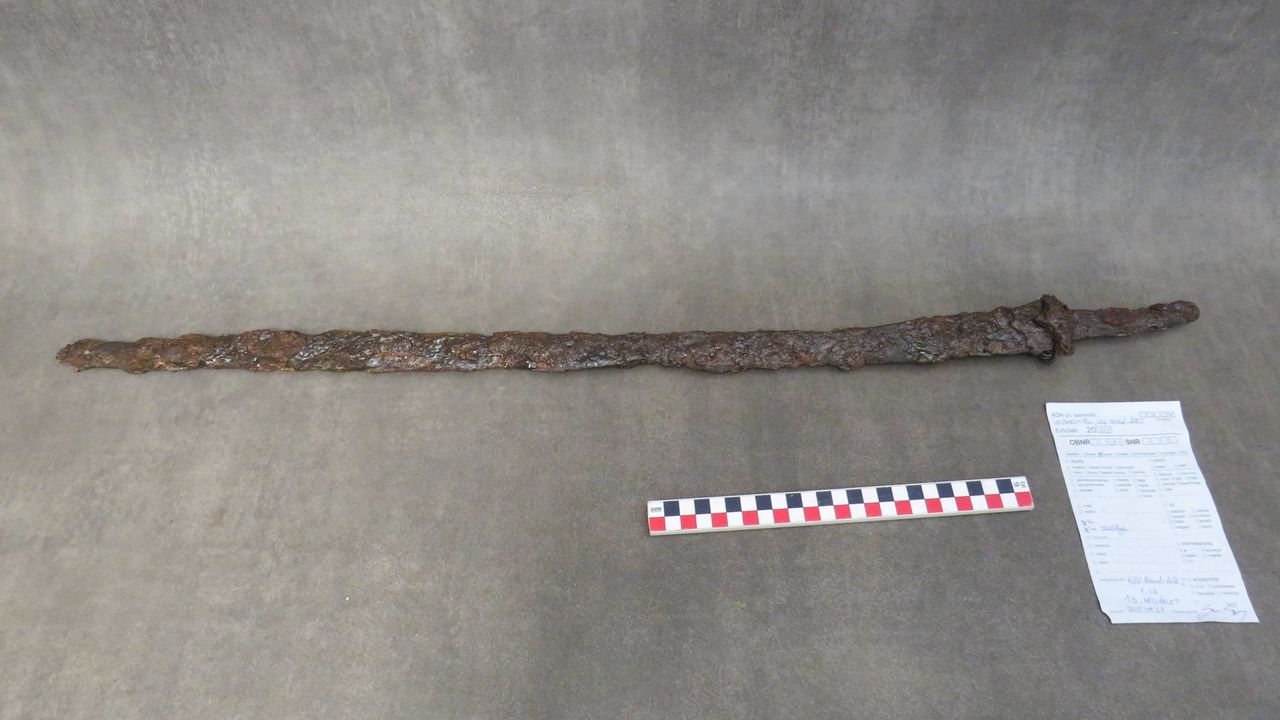Archaeologists in Hungary have made a significant discovery, unearthing a rare iron saber along with jewelry and other artifacts in the tomb of a seventh-century warrior. This tomb, located near the city of Székesfehérvár, approximately 50 kilometers southwest of Budapest, dates back to between A.D. 670 and 690. The findings highlight the craftsmanship of the time and provide valuable insights into the region’s history.
The elegantly curved sword, primarily used by mounted warriors, is in a state of disrepair, showing signs of rust. Nevertheless, traces of intricate decorations on its blade reveal the skill involved in creating such weapons. The tomb was identified through satellite imagery as part of the Cemeteries from Space program, a collaboration between the Hungarian National Museum and the King Saint Stephen Museum, which analyzes crop marks to locate buried archaeological sites.
The tomb is believed to belong to the Pannonian Avars, a group that established a kingdom in the Carpathian Basin during this period. This kingdom emerged within a vast Avar Khaganate, which dominated much of Central Europe. The Avars have long intrigued historians due to their enigmatic culture; they left no written records, making archaeological finds crucial for understanding their way of life.
According to the historian Walter Pohl, the Pannonian Avars were distinct from their Central Asian counterparts. A genetic study conducted in 2022 suggested a connection between the two groups, while also indicating that the Pannonian Avars were a confederation of semi-nomadic peoples, potentially led by Turkic or Mongolian elites. Evidence from a 2024 study also indicates that Avar women may have traveled to their husbands’ villages upon marriage, further shedding light on their social practices.
Despite signs of previous looting, the tomb still contained an impressive array of grave goods. Among the artifacts, archaeologists found a silver ornament resembling a brooch, gilded metal pieces likely used in hair braiding, silver belt fittings, and glass bead earrings. A long knife and numerous arrowheads, although the quiver for the arrows has deteriorated, were also recovered.
The warrior’s remains were located within the tomb, where his arms and lower body were found arranged in anatomical order. However, the upper part of his body, including the head and chest, appeared to have been disturbed by looters. Such findings offer a glimpse into the funerary practices and social structures of the time.
The Pannonian Avars faced numerous challenges, including conflicts with the Byzantine Empire, the Franks, and the Bulgars, which ultimately contributed to the decline of their kingdom by the ninth century. Following their collapse, the territory came under the control of the Magyar people, the ancestors of modern Hungarians.
This recent excavation not only enriches the understanding of Pannonian Avar culture but also emphasizes the importance of continued archaeological research in uncovering the complex histories of ancient societies. The artifacts recovered from the Székesfehérvár tomb will likely provide valuable data for historians and archaeologists alike, contributing to the narrative of Central Europe’s past.







